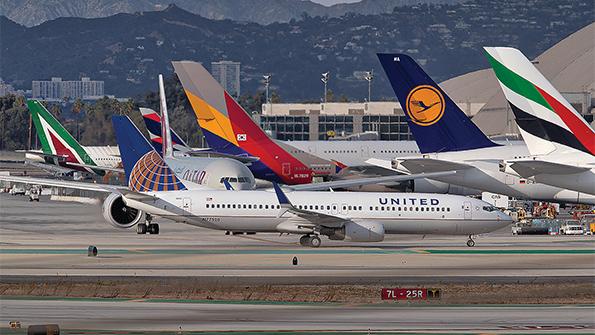
First a disclaimer: Shortly after the global outbreak of the novel coronavirus pandemic starting in March 2020, airlines began to suspend their financial guidance. They found it impossible to predict their performance over the ensuing months, let alone longer term. The International Air Transport Association (IATA) also had to revise its forecasts downward several times throughout the year as the crisis became deeper and longer than it had anticipated.
- After devastating 2020, airlines facing another terrible year
- Traffic return hinges on vaccine progress and distribution
Uncertainty about what will happen next year still prevails, but there is hope now that the worst could soon be over for the airlines as COVID-19 vaccines begin to be distributed in December and become available to a larger part of the population by next summer. If that timetable holds, traffic is expected to pick up significantly compared to 2020, though fall far short of 2019 levels. The industry will still suffer deep losses across the board and burn cash even through the normally busy summer season.
The airline industry is entering 2021 and the slow winter season in a previously unimaginable bad financial condition, with IATA warning that many airlines will run out of cash by the end of the first quarter if they cannot raise additional funds in the financial markets or through a further round of government aid. The industry has been kept alive by around $173 billion in government support since March, and outgoing Director General and CEO Alexandre de Juniac has already called for another $80 billion to avoid yet more airline collapses beyond the 50 seen globally this year.
Because there are still so many variables in play, making accurate financial projections for 2021 is more difficult than for any year in recent history. Consequently, any specific figures published should be viewed with a higher degree of skepticism than they would in normal times. IATA Chief Economist Brian Pearce concedes that “our forecasts are our best estimates, but there is a lot of uncertainty.”
IATA believes that its members have lost a combined $118.5 billion in 2020, $30 billion more than it had predicted in June. In 2021, the industry is projected to lose $38.7 billion, $23 billion more than the association forecast just five months ago. The loss predicted for next year is more than that after the Sept. 11, 2001, terrorist attacks and after the global financial crisis in 2008-09, making the current downturn the worst since World War II.
IATA’s forecast for 2021 is that revenues will return to around 50% of levels expected before the pandemic. That assumes a broad rollout of vaccines during the year as well as testing schemes that will allow a rebound before vaccines become widely available. “The [recent] news of vaccines makes us more optimistic about the traffic rebound in the second half of 2021,” Pearce says.
Airlines still believe that leisure and short-haul travel will return faster than business travel and long-haul trips, based on patterns already visible. Pearce sees “clear indications that there is pent-up demand for leisure and VFR [visiting friends and relatives].”
However, airlines have to assume that the absence of a large volume of business travel will lead to much lower yields. Yields are expected to be down 8% in 2020, while the average load factor is projected to be 65% compared to 82.5% in 2019.
The expected recovery trends will likely intensify shift within the industry toward low-cost carriers, which are generally better able to respond to changing demand patterns. With long-haul traffic likely remaining suppressed, larger legacy airlines will find the climb-out harder to achieve.
But more near-term, IATA warns that the industry is going to burn through another $80 billion in cash before it turns cash-positive at some point, possibly in the fourth quarter of 2021. To enter the winter of 2021-22 in relatively stable financial condition, the industry cannot afford to write off another summer season as it did in 2020. The survival chances of many airlines therefore hinge on vaccine producers sticking to their promised timetables and organizing the logistics required to perform vaccinations on a massive scale.
Airlines themselves will play an important role in this enormous logistics effort and have been preparing to distribute the time-sensitive, temperature-controlled cargo worldwide. The exercise also promises to be good business for cargo carriers.
IATA continues to project a return of traffic measured in revenue passenger kilometers (RPK) to 2019 levels by 2024; passenger numbers will reach previous volumes a year earlier.
